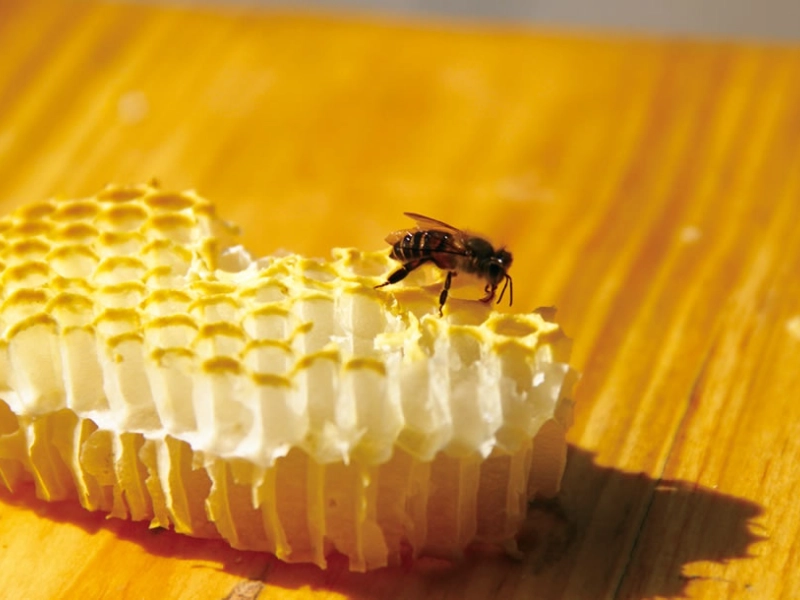Honey and Environmental Protection: The Importance of Bees to Ecosystems
Advertisement
7. The Future of Bees: Innovative Conservation Strategies and Technologies

Advertisement
Looking ahead, creative ideas and advanced technologies are starting to surface to solve the problems endangering bee populations. These developments give promise for additional successful preservation initiatives and sustained coexistence between people and bees.
Precision farming and smart farming methods represent among the most exciting spheres of invention. These methods maximize crop management by means of sensors, drones, and artificial intelligence, so perhaps lowering the demand for pesticides and fostering more bee-friendly farming surroundings. Robotic systems are being created, for example, to selectively eradicate weeds or apply treatments just where needed, therefore reducing the general use of dangerous pesticides.
New techniques for bee conservation are coming from developments in genomics and genetic studies. To grasp and maybe improve bee resistance to illnesses and parasites, scientists are investigating their genes. Although direct genetic alteration of bees is still debatable, this study could lead to breeding initiatives generating tougher, more resilient bee populations without direct genetic modification.
Urban planning is changing to include designs suitable for bees. "Bee corridors" are starting to appeal in cities all around. These linked series of pollinator-friendly spaces let bees migrate between cities more readily. Certain towns are also using green roofs and walls, which not only give bees somewhere to live but also many other environmental advantages.
Technological developments are raising our capacity for population monitoring of bees and their condition. Attached to bees, tiny sensors detect their movements and actions, offering important information on possible stresses and foraging patterns. Early warning of colony health problems, acoustic monitoring systems can identify and examine the sounds of bee colonies.
Large databases on bee populations are being analyzed using artificial intelligence and machine learning, therefore enabling more precisely identification of trends and prediction of possible hazards. By processing enormous volumes of data from many sources—including citizen science initiatives—these technologies can offer a more complete knowledge of bee ecology.
Customizable and exact beehives and bee motels are produced using 3D printing techniques. These buildings can be made to maximize bee health and output as well as to simplify colony monitoring and management for beekeepers and researchers.
Development of bee-friendly pesticides is never stopping. Investigators are looking at RNA interference methods and biopesticides that might target particular pests without affecting bees. These technologies present the possibility for more sustainable pest control going forward even if they are still under development.
Rapid advancement in indoor agriculture technologies and vertical farming is These controlled environment systems can provide year-round growth conditions and help to lower the demand for pesticides, so perhaps relieving some of the stress on outdoor bee populations while still effectively producing food.
Blockchain technology is being used by conservation groups more and more for traceability and openness in the honey manufacturing and bee-related goods. This can enable consumers to choose more wisely and back really environmentally friendly beekeeping methods.
With mobile apps letting people record important data on bee sightings and habits, citizen science programs are getting increasingly complex. These crowdsourced projects give academics large databases that would be difficult to compile using conventional channels.
Virtual and augmented reality technology are improving outreach campaigns and educational opportunities. By helping people see the world from a bee's point of view, these immersive encounters can inspire empathy and support of conservation activities.
Programmes of assisted migration are under consideration as climate change keeps affecting bee habitats. These programs would include carefully moving bee populations to more appropriate locations as changing climate conditions make their natural habitats less livable.
Although these developments present fascinating opportunities, it is advisable to approach them with great care and extensive scientific review. The best answers will probably mix legislative reforms with conventional conservation techniques and technology developments.
Our capacity to be creative, flexible, and cooperative across many fields will determine the course of bee conservation. Combining scientific research, technology developments, and public participation will help us to build a future in which bees not only survive but flourish, therefore guaranteeing the health of our ecosystems and food supplies for next generations.
Ultimately, it is impossible to overestimate the value of bees for our ecosystems. Bees remain a vital focus of environmental preservation activities from their part in pollination and biodiversity to the difficulties they encounter and the creative ideas being created. We must keep raising awareness, supporting studies, and acting to save these priceless species going ahead. Bees' destiny is intricately entwined with our own, hence by preserving their existence, we are thus preserving the fragile equilibrium of life on Earth.
You May Like
Advertisement

